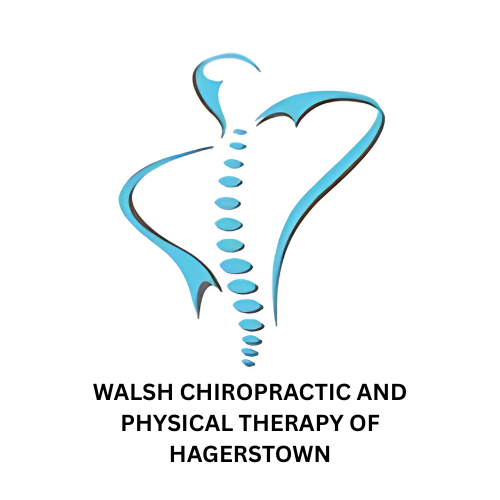What Is Thoracic Kyphosis? A Chiropractor’s Guide to Rounded Upper Back Posture
- Patrick Walsh

- May 12, 2025
- 4 min read
Updated: Nov 22, 2025
Why That Curve in Your Spine Matters
Rounded upper back? Shoulders slumped forward? You might be dealing with something called thoracic kyphosis—and no, that’s not just a fancy term tossed around by anatomy geeks.
Thoracic kyphosis is one of those sneaky postural imbalances that creeps up over time. Most folks don’t even realize it’s happening—until the aches, fatigue, or limited motion show up.
As a chiropractor, I see this all the time. But the good news? It’s manageable—and in many cases, completely reversible with the right care and consistency. Let’s take a closer look at what’s going on behind that curve.
*Double Click to Play Video*
View Full Video Transcript Here
All right, so thoracic kyphosis—it's a very simple term. What it actually means is the type of curve in the spine.
Here's your thoracic spine. Your thoracic spine is everything with the ribs. You have your cervical, which is the neck, and then you have your lumbar, which is the low back. But your thoracic spine has a kyphotic curve. So, if you're facing this way, it curves to the back. A lordotic curve curves to the front. So, your neck and your low back will curve that way.
What Is Thoracic Kyphosis, Really?

Your Spine Has Curves—And That’s a Good Thing
Your spine has three main curves:
Cervical (neck) – curves forward
Thoracic (mid-back) – curves backward
Lumbar (lower back) – curves forward again
That thoracic curve is normal and necessary. But when it becomes too pronounced—often from poor posture or long-term stress—it becomes excessive thoracic kyphosis.
When Normal Becomes Excessive: What Kyphosis Looks Like
It’s more than just a “hunch.” It can affect:
How you breathe
How you move
And how your spine distributes load
When that curve goes beyond normal, it creates a chain reaction that can lead to pain, stiffness, and limited mobility.
What Causes Thoracic Kyphosis?
The Posture Trap (Phones, Desks, and Slouching)
The modern world sets us up for this. Think:
Hunched over desks
Glued to phones
Hours spent sitting
All of this shortens the chest muscles and weakens the postural stabilizers—especially the upper trapezius and mid-back muscles.
Muscle Imbalances and Spinal Stress
Over time, these imbalances create that excessive curve. Often, I see tight pecs and neck flexors, along with underactive rhomboids and lower traps. The result? A domino effect that throws off your whole alignment.
You may also notice neck stiffness or tension headaches alongside it.
Age and Structural Changes
As we age, natural bone loss and reduced flexibility can also make that curve more pronounced. Combine that with a lack of movement, and things stiffen up fast.
Signs and Symptoms to Watch Out For
How It Feels (Pain, Stiffness, Fatigue)
Rounded upper back
Discomfort in the shoulders, neck, or upper spine
Fatigue after standing or sitting too long
How It Functions (Breathing, Balance, Movement)
Reduced breathing capacity from ribcage compression
Changes in your center of gravity
Trouble with flexibility or balance
How Chiropractors Spot and Assess Thoracic Kyphosis
What We Ask in Your First Visit
We start with a posture history—what’s your routine? Do you sit a lot? Are you active? The way you move (or don’t) tells us a lot.
Hands-On Tests and Posture Checks
Then comes the physical assessment:
Spinal palpation
Range of motion checks
Posture analysis from multiple angles
We’re looking for those areas where the spine has lost mobility or become rigid.
Imaging, Only When It’s Needed
In some cases, we’ll recommend an X-ray to see what’s happening structurally. But in most posture-based cases, we can get a clear plan going from the physical exam alone.
The Chiropractic Approach to Rounded Upper Back Posture
Adjustments That Mobilize the Thoracic Spine
One of the most effective ways we help? Spinal adjustments. These aren’t just for the low back. Mobilizing the mid-back helps:
Restore healthy spinal motion
Reduce stiffness
Decrease postural stress
Postural Correction and Muscle Retraining
This is where things get active. We combine adjustments with exercises that:
Strengthen key postural muscles (rhomboids, lower traps)
Loosen the tight ones (pecs, anterior deltoids)
It’s similar to the work we do with physical therapy techniques—designed to reset your movement patterns.
Ergonomics, Sleep Position, and Daily Cues
Everyday habits matter too. We’ll talk:
Desk setup for healthy posture
Sleep posture and the right kind of pillow
Movement cues to check posture throughout the day
You’d be surprised how quickly these shifts help with long-term correction.
When It’s Time to Get Help
If your posture is visibly changing—or if the fatigue, stiffness, or back pain is getting worse—don’t wait.
Chiropractic care gives you:
A personalized care plan
Drug-free pain management
Tools to maintain improvement at home
You can also explore solutions like dry needling or posture-specific stretches that complement chiropractic care.
FAQs About Thoracic Kyphosis
Can thoracic kyphosis be reversed?
Yes—if it’s posture-based and caught early, chiropractic care can be highly effective.
Is it painful?
It can be, especially after long periods of sitting or standing. You might feel tightness, fatigue, or even shallow breathing.
What age does it usually start?
Postural kyphosis can begin as early as adolescence, especially with prolonged screen time.
Can chiropractic care help without surgery?
Absolutely. Non-invasive care like chiropractic adjustments, posture work, and ergonomic coaching is often all that’s needed.
Ready to Straighten Up?
Thoracic kyphosis might be common—but it doesn’t have to limit you.
Book your consultation today and let’s assess your posture together. A better spine means better movement, better comfort, and a better you.





